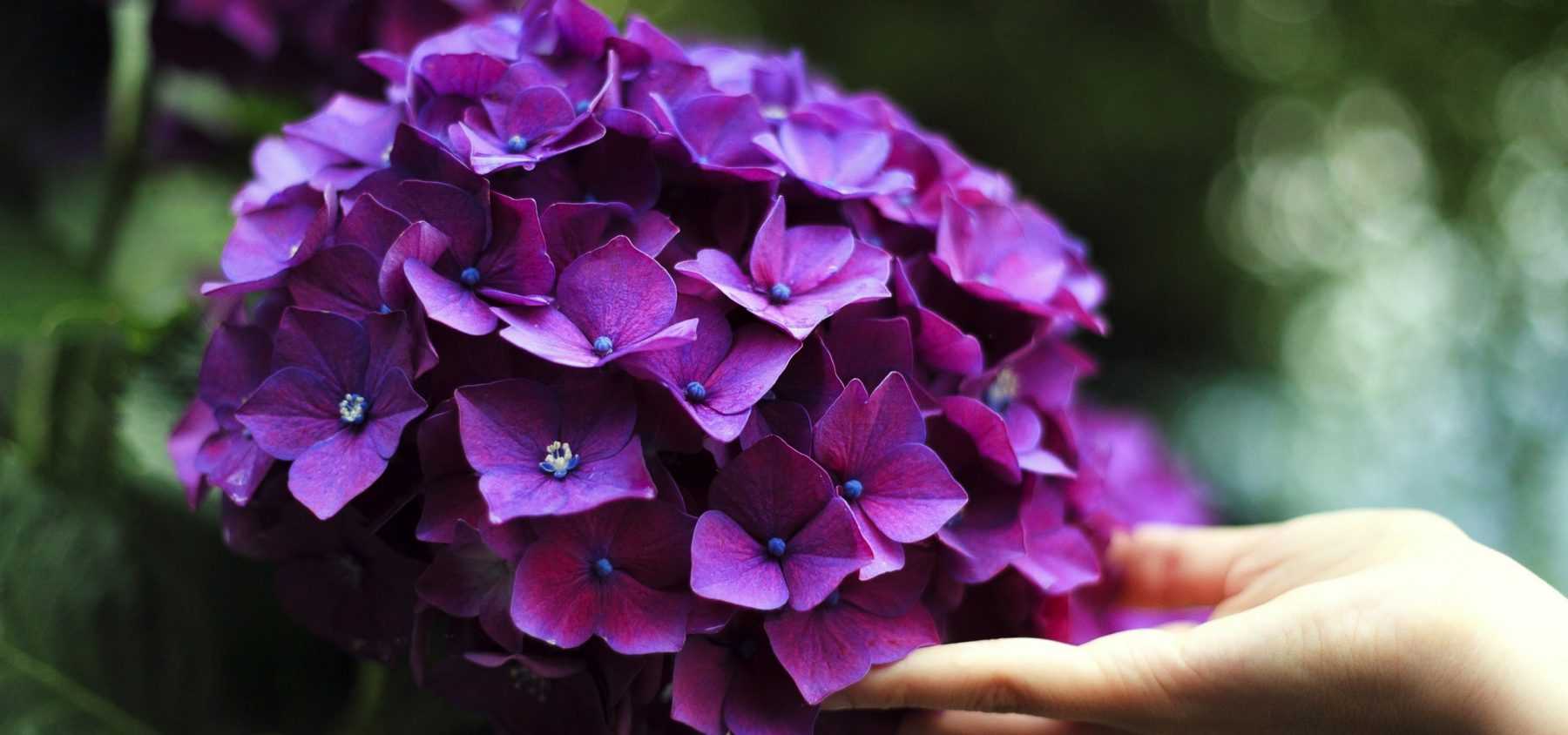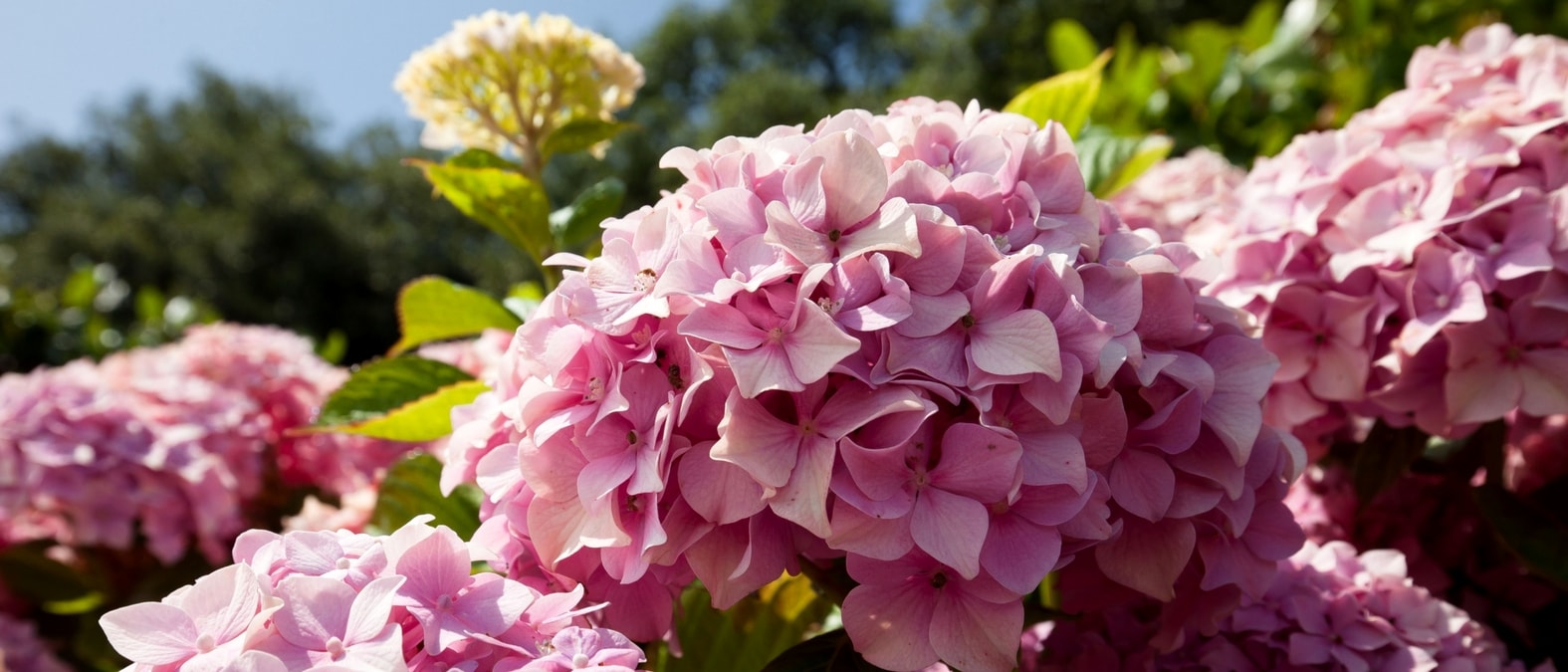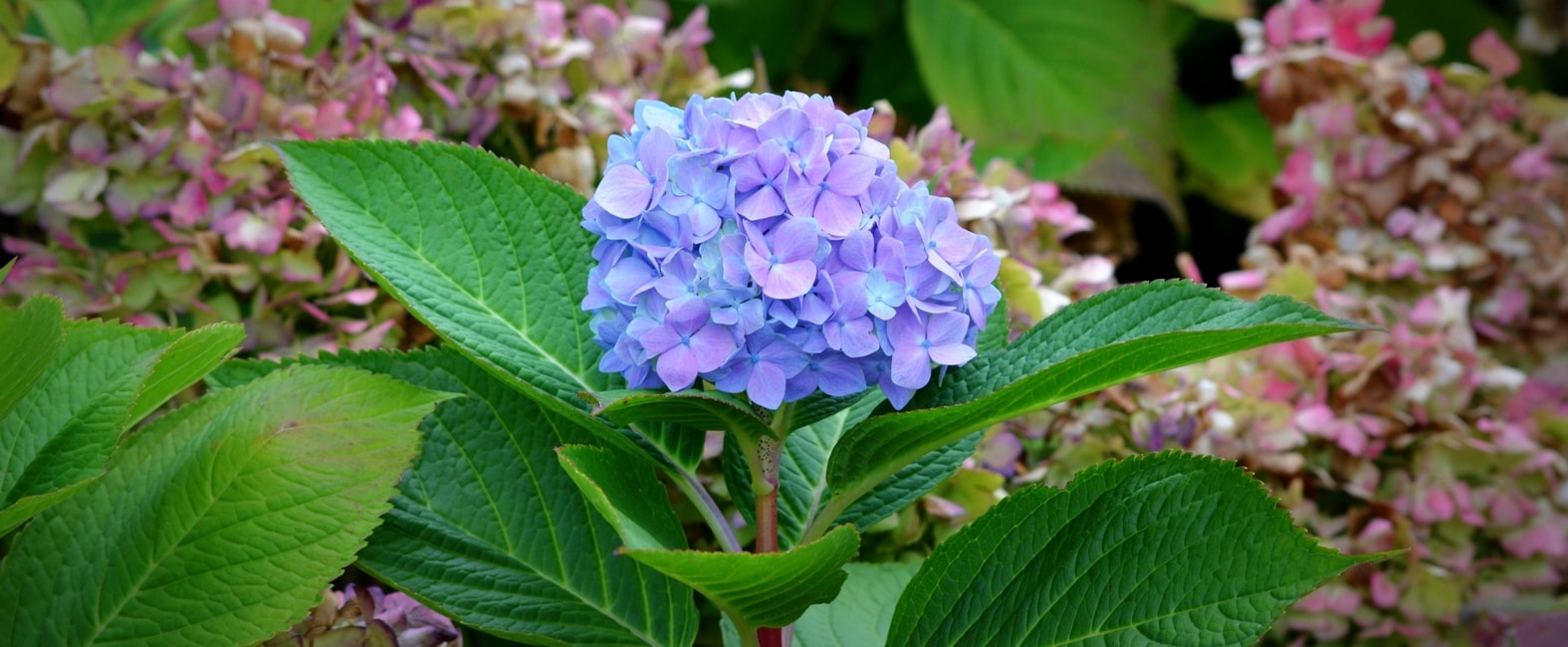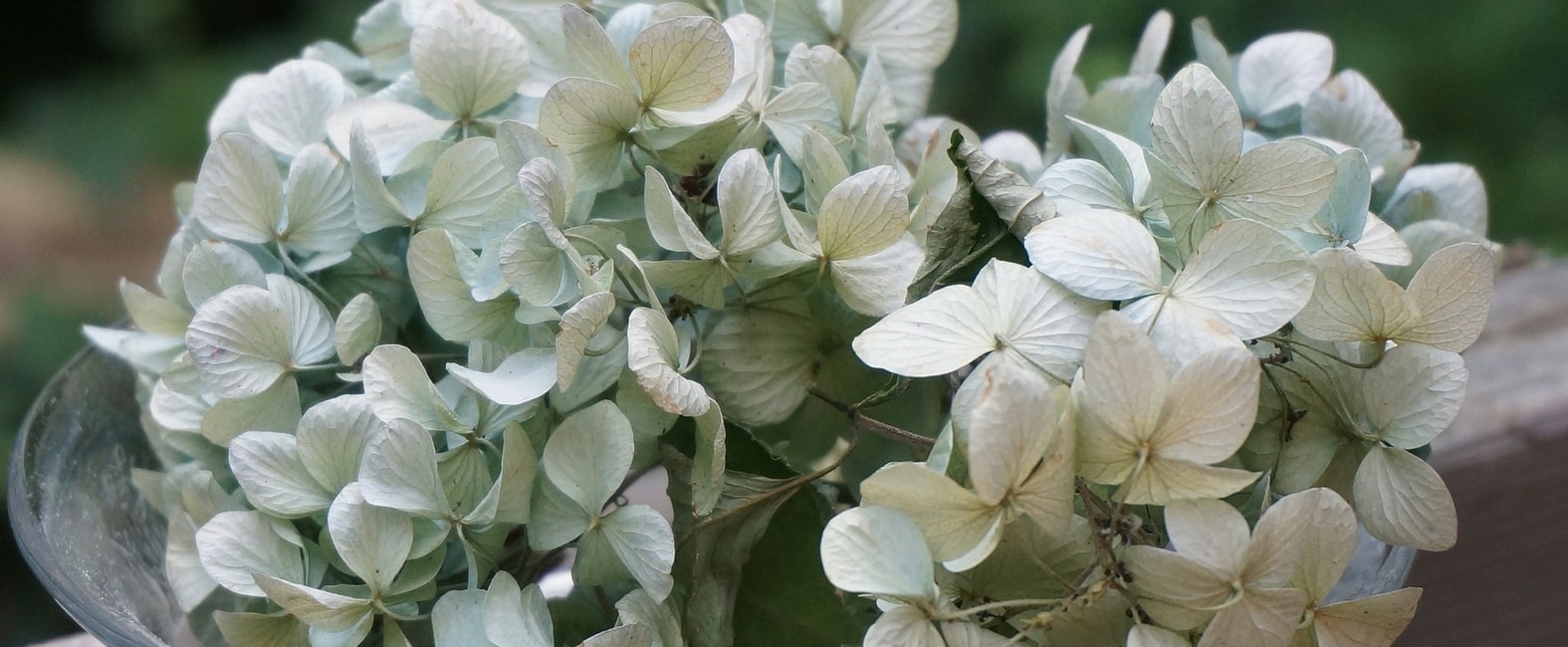
How to Succeed with Your Hydrangeas?
and our tips for getting blue flowers and drying them
Contents
Hydrangeas, or Hydrangea in Latin, captivate us with their impressive summer blooms, often in romantic shades: pink, mauve, blue, or white. They produce large flat inflorescences, ball-shaped or panicle-like, depending on the variety. These deciduous shrubs thrive in semi-shaded locations and prefer slightly acidic soil. They add a romantic and colourful touch to gardens, whether in beds, borders, or even pots. Discover how to grow them successfully, including where and how to plant them, along with our tips for caring for them and helping them thrive season after season!
Where to plant hydrangeas?
Hydrangeas generally prefer partially shaded spots and dislike scorching sun, which can dry out their leaves and scorch their flowers. Most varieties, such as Hydrangea macrophylla and climbing hydrangeas (for example, Hydrangea petiolaris), thrive in shaded or partially sunny areas. For instance, you can plant a climbing hydrangea against a north-facing wall, where it will receive soft, indirect light.
However, some hydrangea varieties tolerate sunnier conditions better. This is the case for Hydrangea paniculata, arborescens, and quercifolia, which can flourish in full sun, provided the soil remains sufficiently cool, especially during periods of intense heat.
Most hydrangeas prefer cool, well-drained soil, rich in humus and slightly acidic. Acidic soil, in fact, enhances the blue hues in Hydrangea macrophylla. It is therefore advisable to add ericaceous compost or organic matter to maintain good acidity and moisture levels. On the other hand, some species like Hydrangea quercifolia and arborescens show greater tolerance to chalky soils and even drier conditions. These varieties are therefore ideal for gardens with more alkaline soils or for areas slightly more exposed to wind and drought.
When to Plant Hydrangeas?
The ideal time to plant hydrangeas is in autumn, between September and November. During this season, the still-warm soil allows the roots to establish well before winter, promoting vigorous growth the following spring. However, it is also possible to plant hydrangeas in spring, from March to May, and even in early summer. In this case, it is important to monitor watering carefully, as young hydrangeas are sensitive to summer droughts. Mulching around the base can also help retain moisture and protect the roots from temperature fluctuations.
How to Plant Them?
To plant hydrangeas successfully, follow these steps:
- Start by digging a hole twice as wide and deep as the plant’s root ball, to allow the roots to spread easily.
- Next, mix some ericaceous compost or well-rotted compost into the excavated soil, especially if your soil is alkaline, as hydrangeas prefer a slightly acidic and organic-rich substrate.
- Place the root ball in the planting hole, ensuring the top of the root ball is level with the ground.
- Gently backfill around the plant and lightly firm the soil.
- Water generously to help the soil settle around the roots.
- Finally, apply an organic mulch around the base of the hydrangea, such as pine bark or dead leaves. This mulch will retain moisture, suppress weeds, and enrich the soil as it decomposes.

How to Care for Hydrangeas?
Proper care of hydrangeas is essential to enjoy their generous blooms and keep the shrubs in good health. Here are the steps to follow:
- Mulch the base of your hydrangeas with dead leaves, wood chips, or pine bark to keep the soil cool, reduce evaporation, and protect the roots from cold in regions with harsh climates.
- In summer, water your hydrangeas regularly, especially during dry spells, as they need moist soil to prevent drying out. Water preferably early in the morning or in the evening, targeting the soil directly without wetting the foliage, which reduces the risk of fungal diseases.
- In autumn, leave the faded flower heads on the branches rather than cutting them off. These dried blooms protect the new shoots from winter frost. This is particularly beneficial in regions with harsh winters.
- In late winter – early spring (February – March), remove the dried flower heads and carry out a light pruning to encourage growth and aerate the plant. For Hydrangea macrophylla, only prune the stems that flowered the previous year, shortening them by a few centimetres. Varieties like Hydrangea paniculata and arborescens can be pruned more heavily to stimulate abundant flowering.
These simple steps ensure healthy growth and vibrant blooms for your hydrangeas every year!
How to Get Blue Hydrangea Flowers?
The colour of the flowers varies depending on the variety but also on the nature of your soil. In acidic soil rich in aluminium sulphate, blue varieties retain their expected colour: an intense blue. But if your soil is neutral or chalky and lacks alumina, the flowers of the same variety will tend to turn pink or purple.
It is not easy to alter the pH (a measure indicating acidity or alkalinity) of soil, even by adding ericaceous compost: rainwater runoff gradually reduces the soil’s acidity. Moreover, if you water with tap water, which is often hard, the pH will be altered.
Nevertheless, to achieve a beautiful intense blue, you can use our alum-based blueing agent. It is very effective, especially if you grow your hydrangeas in pots. Prefer then watering with rainwater, occasionally add regular applications of ericaceous compost to the surface, and use a slate chip mulch, which is naturally rich in alumina.

How to Dry Hydrangea Flowers?
Hydrangea flowers are stunning in dried bouquets and add a natural, elegant touch to your home. Here are the steps to dry them properly:
- Harvest the flowers at the end of their blooming period, usually in September. At this stage, they contain less moisture, which makes drying easier and helps preserve their shape.
- Remove the leaves and dry the flowers upside down. Tie the stems into small bunches and hang them in a dry, well-ventilated area, away from direct sunlight, which could fade the flowers. A dark, airy room, such as an attic or a seldom-used space, is ideal.
- Let the hydrangeas dry for two weeks to a month. By the end of this process, the flowers will retain their characteristic shape and develop soft, sepia tones, perfect for vintage-style decor.
To learn more, check out Virginie’s tutorial on how to successfully dry your hydrangea flowers.

- Subscribe!
- Contents

































